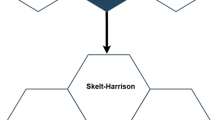Abstract
The presence of shales can cause severe problems for geoscientists in saturation analysis in reservoirs because of their conductivity nature. Shales are generally conductive, so as a result of this, they may consequently conceal the high resistivity distinctive of the presence of hydrocarbon in a reservoir. Shale crystals attract water that is absorbed onto the surface and some cations such as sodium Nat which are naturally surrounded by hydration water. This will result in an unexpected excessively high conductivity compared to rocks that the shale crystals are not present, and such available vacuum might else be occupied by hydrocarbon. This study evaluates a shaly-sand reservoir’s saturation properties using the Maxwan-Smith model and compares it with Archie models for shaly-sand reservoirs in the case study field. The models were coded in a MATLAB environment with users friendly graphic interface. The four shaly-sand reservoirs delineated in the Pennay field have computed net-to-gross ranges from 0.88 to 0.94. The average hydrocarbon saturation for the reservoirs is 0.60, 0.71, 0.62, and 0.59 for Archie models, while 0.64, 0.74, 0.67, and 0.62 were derived using Waxman-Smith models for reservoirs 1 to 4, respectively. A poroperm relationship of y = −0.0036 ln (x) + 0.335 was derived for delineated reservoirs. A mathematical relationship model of Swarchie = 0.88*Swmaxwan-smith + 7.7786 with R = 0.72 was developed to relate Archie to Waxman-Smith derived water saturation in the field. The inferences in this study were premised around the available data for validation of the models. Reservoir characterization using Archie’s equation in shaly-sands resulted in figures of water saturation that are spuriously high. However, the shaly-sand reservoirs delineated were significant in hydrocarbon prospecting. Application of Maxman-smith yields slightly more hydrocarbon saturation by 7% -9% more than Archie models.








Similar content being viewed by others
References
Archie GE (1942) The electrical reservoir log as an aid in determining some reservoir characteristics. Trans AME 146(19):54–64
Bussian AE (1984) A comparison of shaly sands models, Paper E, in 24th Annual Logging Symposium, Society of Professional Log Analysts
Fajana A (2021) Analytical modeling of effect of volume of shale different calculation methods on reservoir Petrophysical parameters. Earth Sci Inf 14:543–561. https://doi.org/10.1007/s12145-020-00563-5
Fajana AO (2020a) 3-D static modeling of lateral heterogeneity using Geostatistics and artificial neural network in reservoir characterization of ‘P’ field, Niger Delta. NRIAG J Astron Geophys 9:129–154. https://doi.org/10.1080/20909977.2020.1727674
Fajana AO (2020b) Hydrocarbon reservoirs characterization using multi-point stochastic inversion technique: a case study of Pennay field. Nat Resour Res. https://doi.org/10.1007/s11053-020-09762-9
Fajana AO, Ayuk MA, Enikanselu PA, Oyebamiji AR (2019) Seismic interpretation and petrophysical analysis for hydrocarbon resource evaluation of 'Pennay' field, Niger Delta. J Pet Explor Prod Technol 9:1025–1040
Hahn BD, Valentine DT (2007) Essential MATLAB for Engineers and Scientists, Third Edition, Butterworth-Heinemann an imprint of Elsevier pp. 449
Waxman MH, Smits LJM (1968) Electrical conductivity in oil bearing Shaly Sands. SPE J 8:107–122
Worthington PE (1985) The evolution of Shaly sand concepts in reservoir evaluation. Log Anal 26(1):23–40
Author information
Authors and Affiliations
Corresponding author
Additional information
Communicated by: H. Babaie
Publisher’s note
Springer Nature remains neutral with regard to jurisdictional claims in published maps and institutional affiliations.
Communicated by: H. Babaie
Appendix
Appendix
CODING OF THE PROJECT AND GUI DESIGN








Rights and permissions
About this article
Cite this article
Fajana, A.O., Ayuk, M.A. & Omoyegun, T.D. Comparison of modified Waxman-Smith algorithms and Archie models in prospectivity analysis of saturations in shaly-sand reservoirs. A case study of Pennay field, Niger-Delta. Earth Sci Inform 14, 1647–1663 (2021). https://doi.org/10.1007/s12145-021-00592-8
Received:
Accepted:
Published:
Issue Date:
DOI: https://doi.org/10.1007/s12145-021-00592-8




